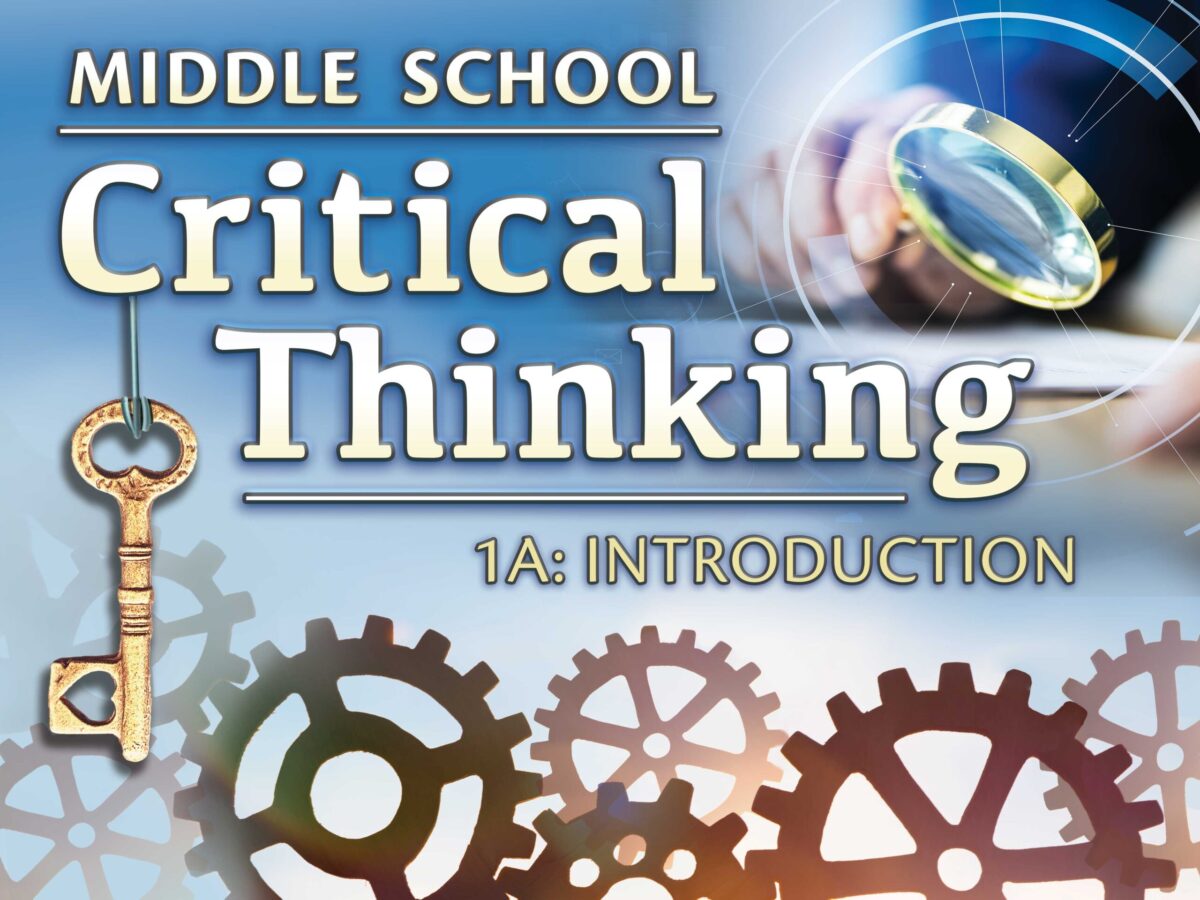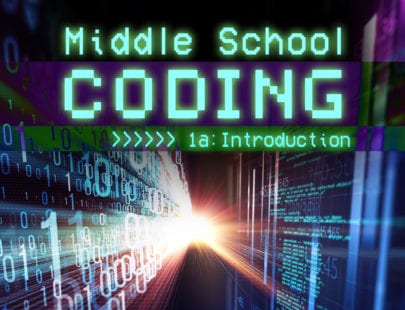
Middle School Critical Thinking 1a: Introduction
Our brains are incredible tools, and they help us observe, analyze, create, and take action every single day. In this course, you are going to learn to unlock one of your brain’s most stunning powers: critical thinking! Get ready to go on an adventure and solve mysteries by applying your own critical thinking skills as you make your way through your units. Then, you’ll use these specialized skills towards issues in the real-world both inside and outside of the classroom. Tap into your most powerful tool today!
Units at a Glance
Unit 1: We’re On the Case!
What does it mean to think critically? Is it being able to solve hard puzzles quickly? Is it getting good grades in school? Is it being able to use ‘street smarts’ or follow your gut when certain conditions arise? It might surprise you to learn that critical thinking plays a role in all those things. Simply put, critical thinking means gathering and analyzing information from different sources and experiences to help make an informed decision. It can be something as small as putting together a jigsaw puzzle or something as large as figuring out the criminal in a murder mystery. Critical thinkers value clarity, accuracy, relevance, and reasoning. Get ready to leave this course prepared to take on life’s mysteries and challenges!
What will you learn in this unit?
- Define critical thinking and its relationship to research, problem-solving, and decision-making
- Explain why critical thinking is useful in various domains, including education, social skills, adulthood, and specific industries
- Identify the different spheres in which individuals may solve problems, including classrooms, schools, family life, and communities
- Assess real-world scenarios related to critical thinking and problem-solving
Unit 2: Breaking it Down
Have you heard the one about why chemists are so great at solving problems? It’s because they have all the solutions! Cheesy jokes aside, there is a strong connection between critical thinking—namely problem-solving—and science. Often, when you think about science, you focus on the things you can do. Experiments. Inventions. Solutions. Equally important is the thinking that leads to these things. Scientific thinking is critical thinking! It requires us to observe, analyze, and make decisions about the world around us. By using the steps laid out in the scientific method, you can gather and test data to help to solve any problems that come your way.
What will you learn in this unit?
- Define the scientific method and its relationship to critical thinking and problem-solving
- Explain the first step of the scientific method, including identifying a problem and breaking it into parts
- Discuss the second step of the scientific method, including generating possible solutions to a problem by brainstorming, asking questions, and conducting research
- Demonstrate the effectiveness of the first two steps of the scientific method as it applies to critical thinking
Unit 3: Finding a Solution
What does it mean to make a decision based on the facts? Why do you need to take time to assess your options when you’re trying to solve a problem? Considering your options before making decisions and taking action is a great way to engage in critical thinking. Whether you’re trying to solve a math problem or figure out if aliens really exist, you can think critically about it. When you ponder every choice and use the data you’ve gathered to inform your decision, you can be sure that any answer or solution you come up with is based on solid reasoning. It also doesn’t hurt that looking at your options, deciding on a solution, and then taking steps to make that solution a reality all happen to be steps of the scientific method!
What will you learn in this unit?
- Explain the third step of the scientific method, including evaluating alternatives and determining what questions to ask
- Discuss the fourth step of the scientific method, including deciding on a solution and outlining logical steps
- Describe the fifth step of the scientific method, including implementing a solution, testing, and making predictions
- Demonstrate the efficacy of steps three through five of the scientific method as it applies to critical thinking
Unit 4: So What? Analyzing and Communicating Results
Both analysis and communication are integral parts of the scientific method and thinking critically. Critical thinkers frequently review, revise, and share their ideas. This process of analysis allows them to ensure their solutions are the best fit for the problems they are facing. By sharing their ideas and thought processes, they make it easy for those around them to replicate their solutions. When you take the time to analyze your decisions and then share your final product with others, it encourages others to also engage critically and collaborate to craft strong solutions.
What will you learn in this unit?
- Explain the sixth step of the scientific method, including evaluating or analyzing results, querying accuracy, planning for optimization, and gathering feedback
- Discuss the seventh and final step of the scientific method, including communicating results, defending conclusions, and analyzing opposing viewpoints
- Describe the efficacy of the scientific method and critical thinking as it applies to a real-life problem
- Demonstrate the efficacy of the final two steps of the scientific method as it applies to critical thinking
Unit 5: Journey Through the Mind
Critical thinking starts in our brains. And how our brains develop throughout our lives plays a crucial role in our ability to think critically at different points in time. The way we see and process the world at age 5 is vastly different from age 15. As we grow and develop, our brains shift—allowing us to think about problems around us in increasingly advanced ways. By understanding the way our brains develop, we can better understand how we think and problem-solve at different stages of our lives.
What will you learn in this unit?
- Discuss brain development in babies and toddlers as it relates to critical thinking, including Piaget’s Stages of Cognitive Development
- Describe brain development in pre-school aged children and elementary-aged children as it relates to critical thinking, including the development of inductive and deductive reasoning skills
- Explain brain development in middle school-aged children and teenagers as it relates to critical thinking, including morality, logical thinking, and processing speed
- Identify the circumstances that foster critical thinking in children and adults, including environmental factors, cultural expectations, and educational access
Unit 6: Be The Change: Problem-Solving in Your Community
What does it mean to “be the change”? It means to start taking action to make the world a better place. Making an impact or creating positive change within your community is a powerful thing. Anyone can be the change in their community, from children and teens to people who have lived 100 years. Some changes are large. They involve a lot of people and a lot of processes. Some changes are small. They might be a tiny kind act for a neighbor or a single suggestion made in a classroom. No matter the size of the change, it is possible to help your community and your world through strong critical thinking and problem-solving skills. You have the skills and knowledge to “be the change.”
What will you learn in this unit?
- Discuss problem-solving in school and academic settings, including social interactions
- Examine problem-solving in family life, including family dynamics and cultural norms
- Explore problem-solving in neighborhoods and regional communities
- Demonstrate the efficacy of problem-solving and critical thinking as it applies to real-life problems facing people around the world
Required Materials
Coming Soon!

